Beautiful Bavaria
Bavaria, September 16-21
Reentering Germany on Saturday, we drove first to Würzburg to visit the huge Baroque Residenz, built in the 18th Century by prince-bishops from a wealthy noble family. Heavily damaged in World War II, the palace has been so beautifully restored it was easy to see why both Maria Theresia and Napoleon bunked there. We were particularly fascinated by the court chapel, where the over-the-top interior won our “go for Baroque” award for the entire trip—no mean accomplishment.
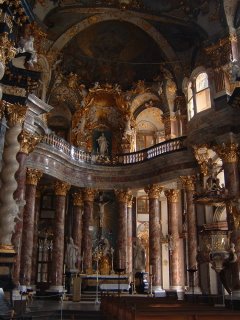
Hofkirche at Würzburger Residenz
Our destination that day was Schweinfurt (“pig ford” in English), the home of Mary Ritzmann, the daughter of Todd’s college roommate (and, as we recently discovered, his sixth cousin), her husband Fritz, and their two daughters, Anna and Charlotte. The Ritzmanns are a product of the NATO alliance, for they met when Mary, a captain in the U.S. Army JAG Corps, volunteered as a cellist in the Schweinfurt chamber orchestra. Fritz, a banker in his day job, was the group’s concertmaster, and the rest is history. We ate a wonderful venison dinner that evening (with meat both shot and cooked by Fritz) and toured the city on Sunday. As the pictures show, Schweinfurt delights in its porcine appellation with painted plastic pigs, like Chicago’s cows, throughout the downtown area and brass porkers as permanent statuary.
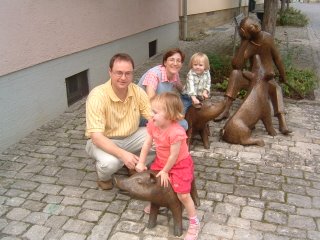
Ritzmann family and friends
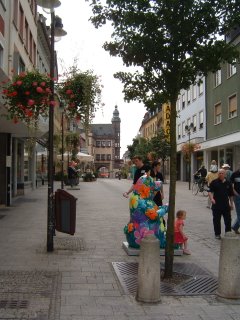
Downtown Schweinfurt with pig and city hall in background
On Monday we first traveled to Nürnberg, the scene of much German history up to and including the Nazi era. To our regret, the famed German National Museum was closed, but the city’s architecture and statuary were impressive indeed, especially the Kaiserburg, which looms over the city, and the 14th Century Schöner Brunnen with statues of Biblical figures and German princes. In the city’s churches we were able to view several impressive works by Veit Stoss, a Nürnberger whose famous altarpiece we had seen in Cracow. Finally, a visit to Nürnberg would be incomplete without the purchase of Lebkuchen, so we are now set for the holiday season.

Schöner Brunnen
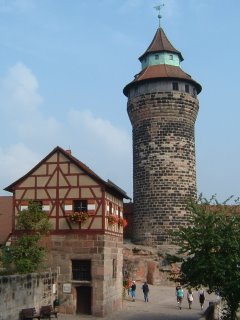
Kaiserburg tower
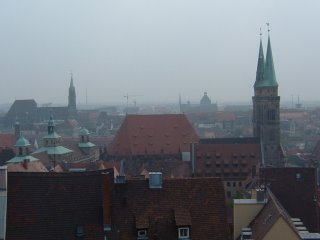
Nürnberg from Kaiserburg
We ended the day in Bayreuth, where we were the guests of Joachim von Feilitzsch, a friend of Todd’s from his vice consular days in Munich, Joachim’s wife Irene, and their daughter Sophie. With Irene as guide we toured the city on Tuesday, including a fascinating visit to the Festspielhaus, which is only used five weeks each summer for the Wagner festival. Designed to Richard Wagner’s specifications, the hall accommodates less than 2000 spectators on seats almost devoid of padding that might muffle the music—a daunting prospect for a five-hour opera. The orchestra pit lies under the stage so that the music rises through a slot and mixes with the voices before reaching the audience.
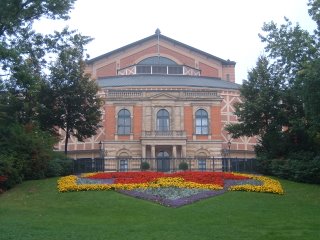
Wagner Festspielhaus
Interestingly, this is not the only opera house in Bayreuth. As we discovered, its predecessor was erected by Wilhelmine, Frederick the Great’s favorite sister, who married the Margrave Frederick but found that Bayreuth was dullsville. A composer and friend of Voltaire like her famous brother, she decided to bring the city into the 18th Century by building a Baroque palace, hermitage, and opera house, all of which we visited. To round out our day at the opera, we dined with the von Feilitzches at Eule, a restaurant decorated with autographed pictures of the singers who ate there after their performances at the Wagner festival.
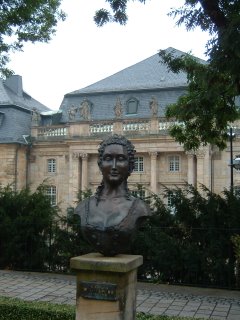
Wilhelmine in front of Old Opera House
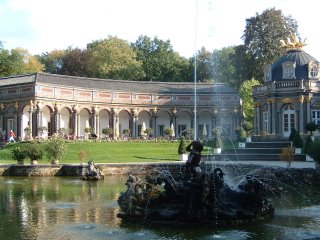
Eremitage
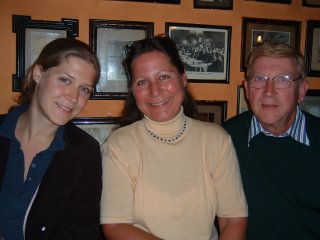
von Feilitzsch family at Eule
Our next stop was Berchtesgaden in Germany’s southeast corner where the Alps rise steeply above the Upper Bavarian plain. Thanks to Michelin, we had booked a room in a family-run inn near the town, but the Red Guide offered few clues as to its exact location. After an hour of dead ends and oral directions, we found our lodgings high above the town with fantastic views of the surrounding mountains.

Berchtesgaden sunset from our hotel
Our hotel was located a few minutes’ drive from the jumping-off point for the Kehlsteinhaus (aka “Eagle’s Nest”), the mountain-top tea house built for Adolf Hitler as a place to awe foreign visitors. There we spent two fascinating hours in a museum that detailed the history of the Third Reich with particular reference to Berchtesgaden, Hitler’s favorite retreat. Afterwards we traveled 6 km by low-geared bus and elevator to the Kehlsteinhaus, a surprisingly modest structure given the incredible engineering required to reach it. The views were spectacular, however.

Kehlsteinhaus
